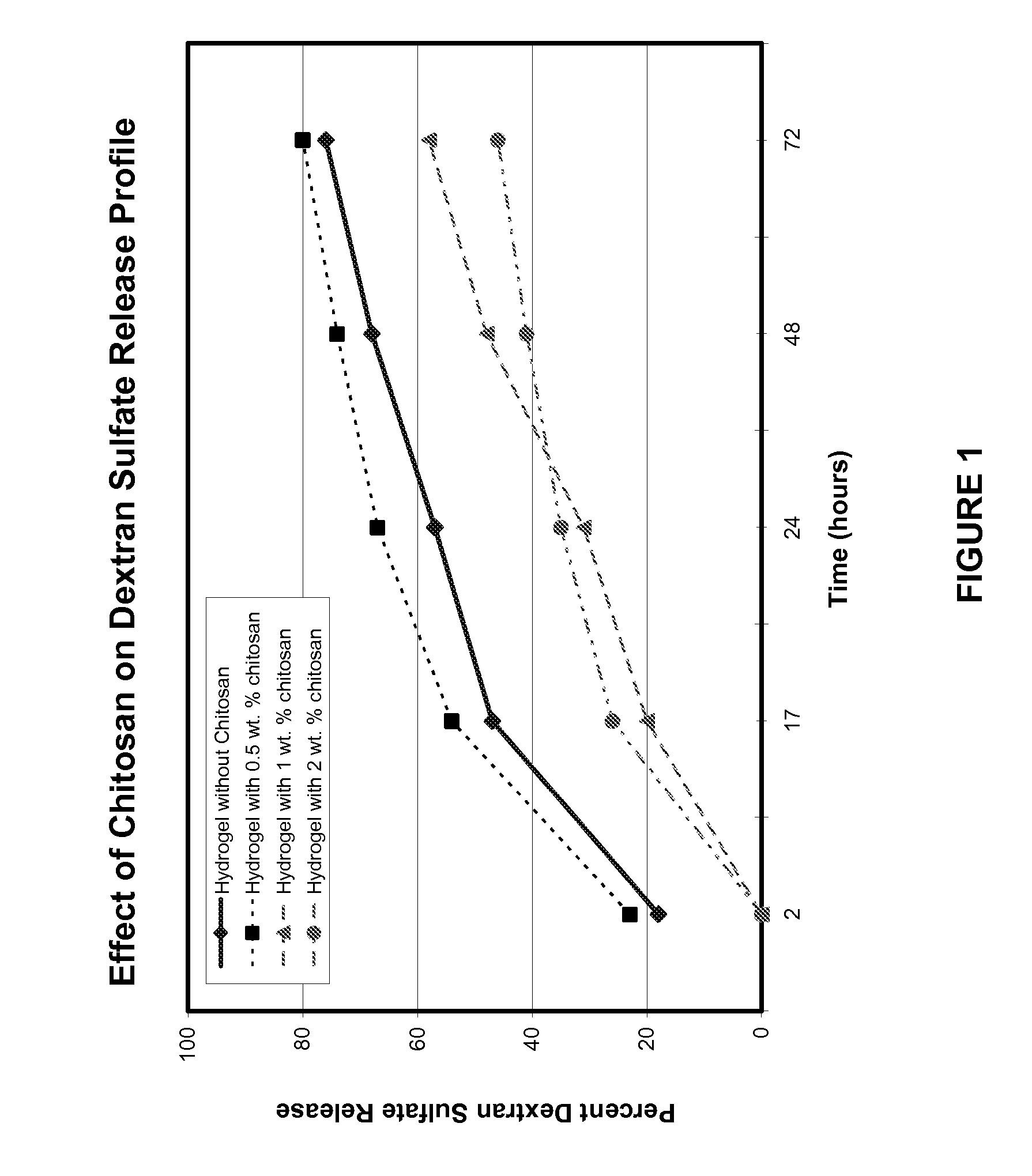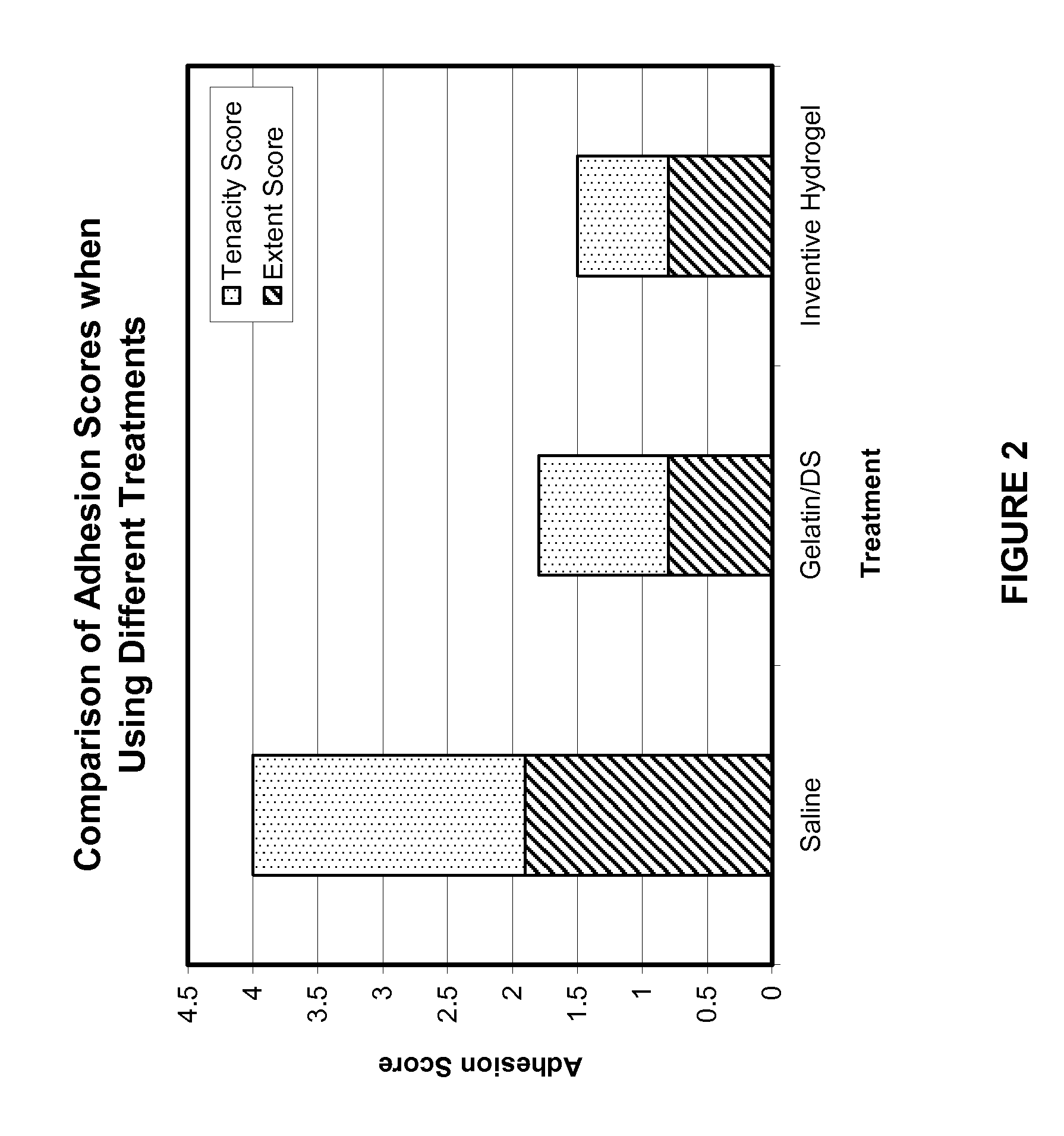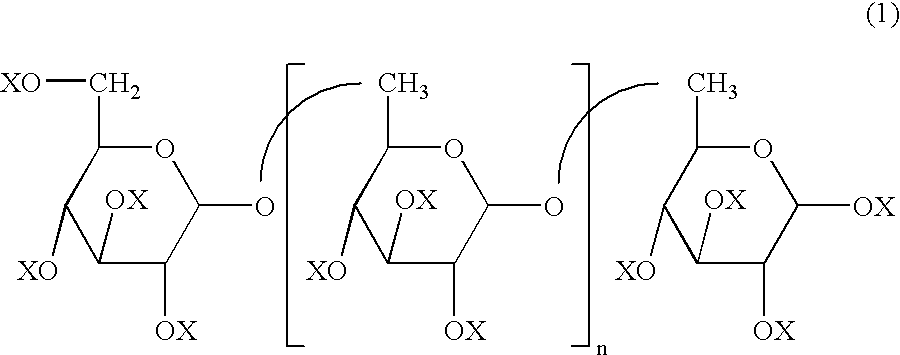Gel composition for cellular adhesion inhibition
a technology of cellular adhesion and inhibitory agent, which is applied in the field of crosslinked hydrogel compositions comprising a cellular adhesion inhibitory agent, can solve the problems of scar tissue overgrowth, unsightly scars, chronic pain, etc., and achieve the effect of preventing cell adhesion and preventing cell adhesion
- Summary
- Abstract
- Description
- Claims
- Application Information
AI Technical Summary
Benefits of technology
Problems solved by technology
Method used
Image
Examples
example 1
Preparation of Adhesion Inhibitory Composition with Two Hydrogel Matrix Components
[0079] 50 mg of dextran sulfate was dissolved in 1 ml of phosphate buffer solution (PBS) (1M, pH 7.4). Next, 0.1 g of 6-arm PEG-succinimidyl glutarate was added to the solution. Separately, 0.1 g of 4-arm PEG-amine was dissolved in 1 ml of PBS. The two solutions were combined to react the two PEG components. A hydrogel formed within about 30 to 60 seconds. The formed gel was a PEG / PEG hydrogel matrix with dextran sulfate physically entrapped therein.
example 2
Preparation of Adhesion Inhibitory Composition with Three Hydrogel Matrix Components
[0080] 50 mg of dextran sulfate was dissolved in 1 mg of PBS. Next, 0.1 g of 4-arm PEG-amine was added to the solution. Separately, 20 mg of chitosan was dissolved in 1 ml of PBS and 0.1 g of 6-arm PEG-succinimidyl glutarate was added to the chitosan solution. The two solutions were combined to react the two PEG components. A hydrogel formed within about 30 to 60 seconds. The formed gel was a PEG / PEG hydrogel matrix with chitosan chemically conjugated to one PEG component and with dextran sulfate physically entrapped within the gel.
example 3
Non-Hydrated Formulations
[0081] Preparation of hydrogels having the compositions provided in Examples 1 and 2 can also be prepared using a non-hydrated mixture of the gel components. For a two-component hydrogel composition, 50 mg dextran sulfate, 0.1 g 6-arm PEG-succinimidyl glutarate, and 0.1 g 4-arm PEG-amine (all in powdered form) are mixed together, to provide a, preferentially, homogeneous mixture. The hydrogel of Example 1 can then be prepared by adding 2 ml of PBS to the above mixture.
[0082] For a three-component hydrogel composition, 50 mg dextran sulfate, 0. 1 g 4-arm PEG-amine, 20 mg chitosan, and 0.1 g 6-arm PEG-succinimidyl glutarate (all in powdered form) are mixed together to form a, preferentially, homogeneous mixture. The hydrogel of Example 2 can then be prepared by adding 2 ml of PBS to the mixture.
PUM
| Property | Measurement | Unit |
|---|---|---|
| Time | aaaaa | aaaaa |
| Percent by mass | aaaaa | aaaaa |
| Percent by mass | aaaaa | aaaaa |
Abstract
Description
Claims
Application Information
 Login to View More
Login to View More - R&D
- Intellectual Property
- Life Sciences
- Materials
- Tech Scout
- Unparalleled Data Quality
- Higher Quality Content
- 60% Fewer Hallucinations
Browse by: Latest US Patents, China's latest patents, Technical Efficacy Thesaurus, Application Domain, Technology Topic, Popular Technical Reports.
© 2025 PatSnap. All rights reserved.Legal|Privacy policy|Modern Slavery Act Transparency Statement|Sitemap|About US| Contact US: help@patsnap.com



